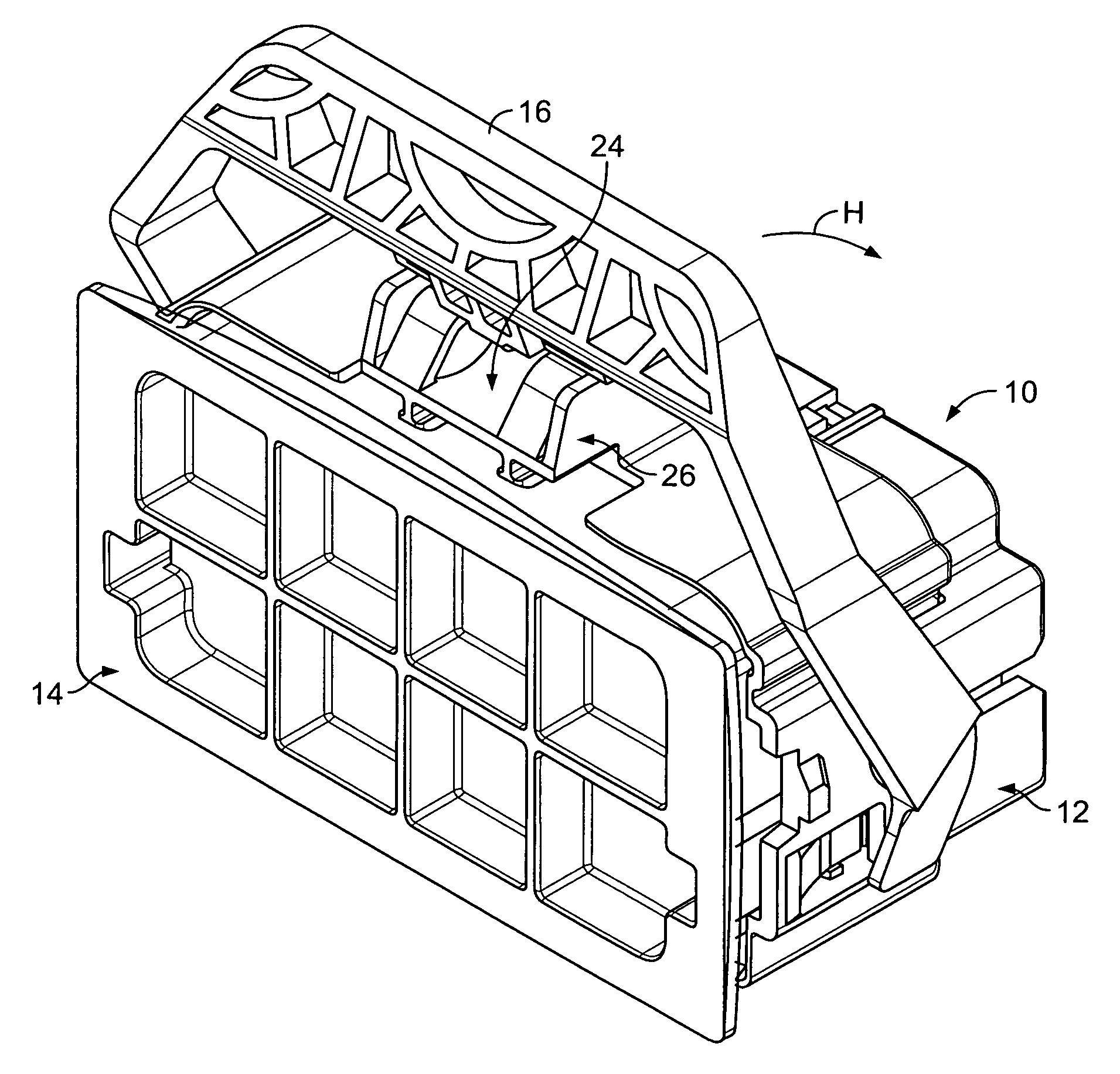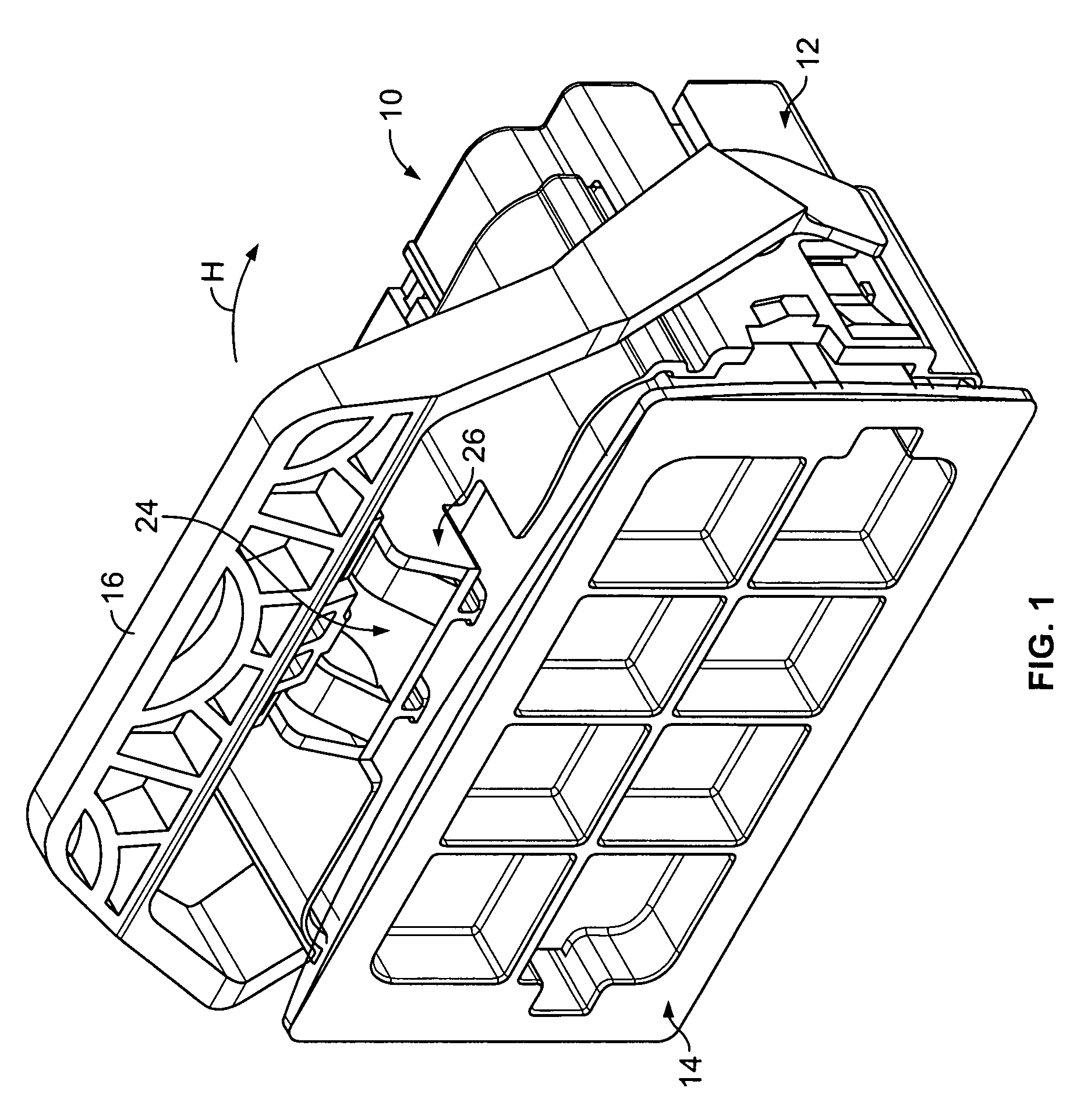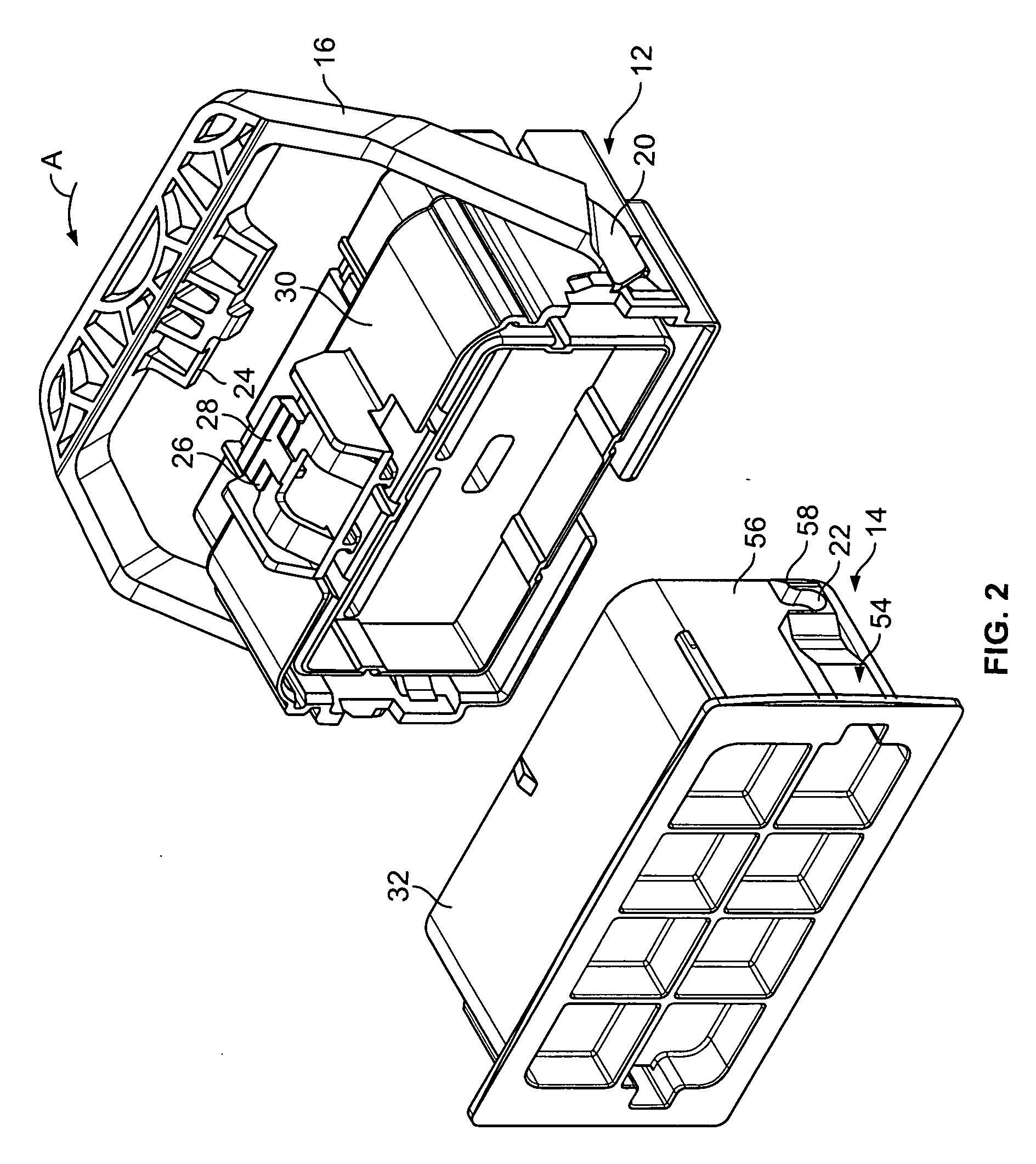Lever type electrical connector
a technology of lever actuators and connectors, which is applied in the direction of coupling device connections, coupling parts engagement/disengagement, electrical apparatus, etc., can solve the problems of insufficient mechanical advantage provided by lever actuators, inability to effectively mate or unmate large connectors, and difficulty in hand-held operation, etc., to achieve precise force transfer system, large output force, and substantial constant load
- Summary
- Abstract
- Description
- Claims
- Application Information
AI Technical Summary
Benefits of technology
Problems solved by technology
Method used
Image
Examples
Embodiment Construction
[0045] Referring to the drawings in greater detail, and first to FIGS. 1 and 2, a lever-type electrical connector assembly 10 is illustrated that includes a first connector or housing 12 and a second connector or header 14. Each connector 12 and 14 includes a plurality of electrical contacts (not shown) received therein. Preferably, the assembly 10 includes greater that 90 electrical contacts and, when assembled, is at least 70 mm wide, 60 mm long, and 60 mm high. In one preferred example, the connector 10 may include 98 electrical contacts and be configured as a harness connector for diesel engines; however, other uses, sizes, and configurations of the connector 10 are also possible.
[0046] Connectors of such size and configuration typically require greater than about 300 N of force to overcome frictional and engagement forces in order to mate or un-mate the header 14 and the housing 12. To this end, the connector 10 further includes a lever actuator 16 having a first, pre-mate, or...
PUM
 Login to View More
Login to View More Abstract
Description
Claims
Application Information
 Login to View More
Login to View More - R&D
- Intellectual Property
- Life Sciences
- Materials
- Tech Scout
- Unparalleled Data Quality
- Higher Quality Content
- 60% Fewer Hallucinations
Browse by: Latest US Patents, China's latest patents, Technical Efficacy Thesaurus, Application Domain, Technology Topic, Popular Technical Reports.
© 2025 PatSnap. All rights reserved.Legal|Privacy policy|Modern Slavery Act Transparency Statement|Sitemap|About US| Contact US: help@patsnap.com



